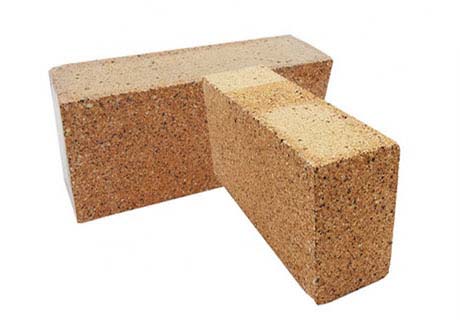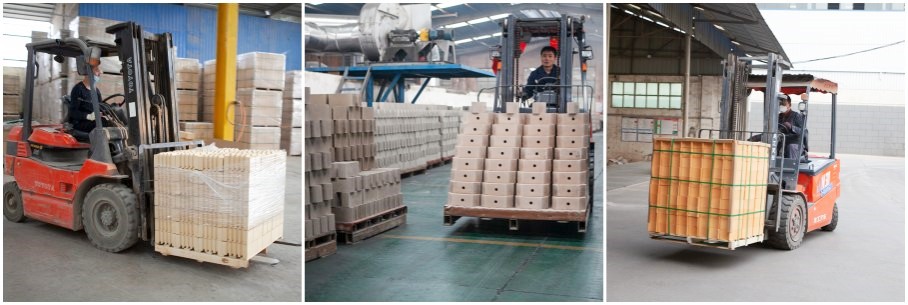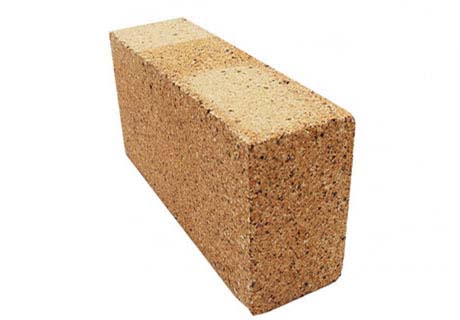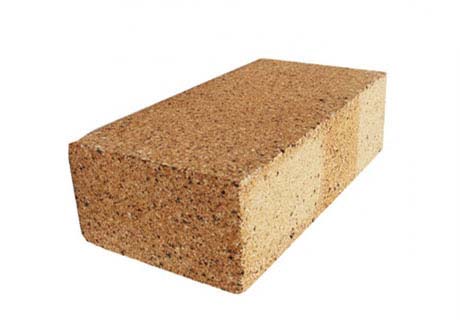
Brief Introduction
Fire clay brick is made from clinker clay by mixing, forming, drying, sintering and matching characterized by good resistance to corrosion and abrasion, good thermal shock resistance, good spelling resistance, high mechanical strength, good volume stability under high temperature. 
Technical Datas
| ITME | SK 31 | SK 30 | SK 30 | SK 29 | SK 29 | SK 28 | SK 27 |
| CHINA CODE | N-1 | N-2a | N-2b | N-3a | N-3b | N-4 | N-5 |
| Refractoriness ℃ | 1750 | 1730 | 1730 | 1710 | 1710 | 1690 | 1670 |
| Al2O3 % | 40 | 39 | 34 | 34 | 32 | 32 | 31 |
| Fe2O3 % | 2.1 | 2.1 | 2.3 | 2.3 | 2.5 | 2.5 | 2.5 |
| Apparent Porosity% | 22 | 24 | 26 | 24 | 26 | 24 | 26 |
| Bulk Density g/cm3 | 2.15 | 2.1 | 2.1 | 2.05 | 2.05 | 2.05 | 2 |
| Cold Crushing Strength Mpa | 30 | 25 | 20 | 20 | 15 | 20 | 15 |
| 0.2Mpa Refractoriness Under Load T0.6 ℃ ≥ | 1400 | 1350 | 1350 | 1320 | 1320 | 1300 | 1300 |
| Reheating Linear Change 1400℃ | 0.1–0.4 | 0.1–0.5 | 0.2–0.5 | ||||
| Reheating Linear Change 1350℃ | 0.2–0.5 | 0.2–0.5 | 0.2–0.5 | 0.2-0.5 |
Features
The refractoriness of clay bricks is the same as that of silica bricks, as high as 1690~1730°C, but the softening temperature under load is more than 200°C lower than that of silica bricks. Because in addition to the mullite crystals with high refractoriness, clay bricks also contain nearly half of the low melting point amorphous glass phase.
Application
Clay refractory bricks are divided into clay refractory bricks for blast furnaces, clay refractory bricks for hot blast stoves, and large clay refractory bricks for glass kilns. In addition, clay refractory bricks can also be used in secondary parts of coke ovens, such as regenerator sealing wall, small flue lining bricks and regenerator checker bricks, furnace door lining bricks, furnace roof and riser lining bricks wait. Alumina content in fireclay bricks approximate 28-45% are classified to Low Duty Fireclay Bricks, Medium Duty Fireclay Bricks, High Duty Fireclay Bricks and Super Duty Fireclay Bricks.



